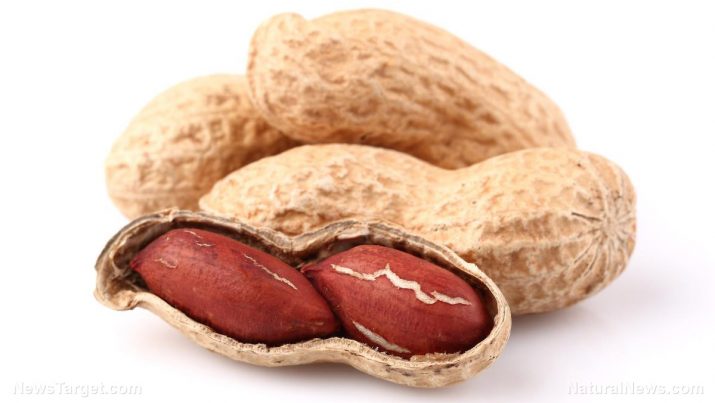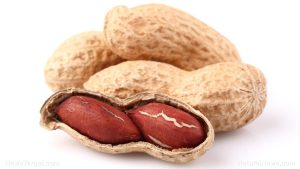
Mancozeb — toxicity, side effects, diseases and environmental impacts
Thursday, December 07, 2017 by Zoey Sky
http://www.naturalpedia.com/mancozeb-toxicity-side-effects-diseases-and-environmental-impacts.html

Mancozeb is a broad spectrum contact fungicide with a protective action. It belongs to the dithiocarbamates family of chemicals, which also includes maneb. Mancozeb is applied as a spray (aerial or ground) and is supplied as wettable powders and granules which are mixed with water. It appears as a gray- to yellow-colored powder. Mancozeb disrupts lipid metabolism.
Mancozeb’s trade names and identifiers include:
- Dithane
- 1,2-Ethanedicarbamic acid, tetrathio-
- 8018-01-7
- AC1MHXEB
- 2234-56-2
- DSSTox_CID_14695
- DSSTox_RID_79192
- DSSTox_GSID_34695
- CTK8G0735
- CHNQZRKUZPNOOH-UHFFFAOYSA-J
- Tox21_300314
- NCGC00168344-01
- NCGC00168344-02
- NCGC00168344-03
- NCGC00168344-04
- NCGC00254169-01
- 12656-69-8
- DR003213
- LP113097

List of known side effects
Exposure to mancozeb may cause an allergic skin reaction. It is suspected of damaging fertility or the unborn child. Mancozeb is very toxic to aquatic life.
Mancozeb has a very low acute toxicity to mammals. No toxicological effects were observed in a long-term study with rats fed doses of five milligrams per kilogram (mg/kg). The major routes of exposure to mancozeb are through the skin or from inhalation.
In spray or dust forms, the ethylene bisdithiocarbamates (EBDCs), a class of chemicals to which mancozeb belongs, are moderately irritating to the skin and respiratory mucous membranes. Symptoms of poisoning from this class of chemicals include itching, scratchy throat, sneezing, coughing, inflammation of the nose or throat, and bronchitis.
It is a mild skin irritant and sensitizer, and a mild to moderate eye irritant in rabbits. Agricultural workers handling crops treated with mancozeb have developed sensitization rashes.
Body systems affected by mancozeb
Developmental abnormalities of the body wall, central nervous system, eye, ear, and musculoskeletal system were observed in experimental rats which were given a very high dose of 1,320 mg/kg of mancozeb on the 11th day of pregnancy.
There is no evidence of ‘neurotoxicity,’ nerve tissue destruction, or behavior change from the EBDCs. However, dithiocarbamates are partially chemically broken down, or metabolized, to carbon disulfide, a neurotoxin capable of damaging nerve tissue.
Items that can contain mancozeb
Mancozeb alone is used on a number of crops worldwide to control a number of fungal diseases such as Anthracnose, Pythium blight, leaf spot, downy mildew, Botrytis, rust, and scab. It is also effective against algae.
Mancozeb is approved for use on a huge variety of crops, such as potatoes, oilseed rape, lettuce, wheat, apples, tomatoes, table grapes, wine grapes, bulb onions, carrot, parsnip, shallot, durum wheat, and leeks.
Some manufacturers and suppliers of products using mancozeb:
- AgriGuard
- Certis
- Dow AgroSciences
- DuPont
- Headland
- Interfarm
- Nufarm
- Sipcam
- Syngenta
Examples of products using this active ingredient are:
- Fubol Gold
- Dithane Dry Flowable
- Dithane 945
- Karamate DryFlo
- Manzate 75WG
- Matilda WG
- Penncozeb
How to avoid mancozeb
Always wear proper protective gear when handling mancozeb. Suitable extinguishing media include water sprays, alcohol-resistant foams, dry chemicals, or carbon dioxide. Firefighters must wear self-contained breathing apparatus for firefighting if necessary.
Suggested personal protection gear when handling mancozeb includes a particulate filter respirator adapted to the airborne concentration of the substance. Sweep spilled mancozeb into sealable containers. Carefully collect the remainder, then store and dispose of mancozeb according to local regulations. Do NOT wash away mancozeb into the sewer.
Where to learn more
- Glyphosate exposure causes sunlight to result in aggressive, deadly skin cancers, new science reveals
- Fungicides used on banana plantations threaten the health of pregnant women
- Chemicals.news
- Toxins.news
- Pesticides.news
Summary
Mancozeb is a broad spectrum contact fungicide with a protective action. It belongs to the dithiocarbamates family of chemicals, which also includes maneb.
Exposure to mancozeb may cause an allergic skin reaction. It is suspected of damaging fertility or the unborn child. Mancozeb is very toxic to aquatic life.
Mancozeb is approved for use on a huge variety of crops, such as potatoes, oilseed rape, lettuce, wheat, apples, tomatoes, table grapes, wine grapes, bulb onions, carrot, parsnip, shallot, durum wheat, and leeks.
Sources include:
Tagged Under: Tags: mancozeb





